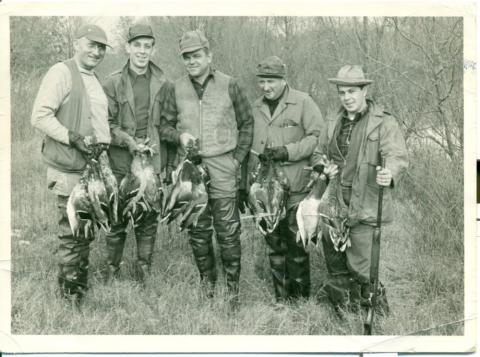Ryan Graves
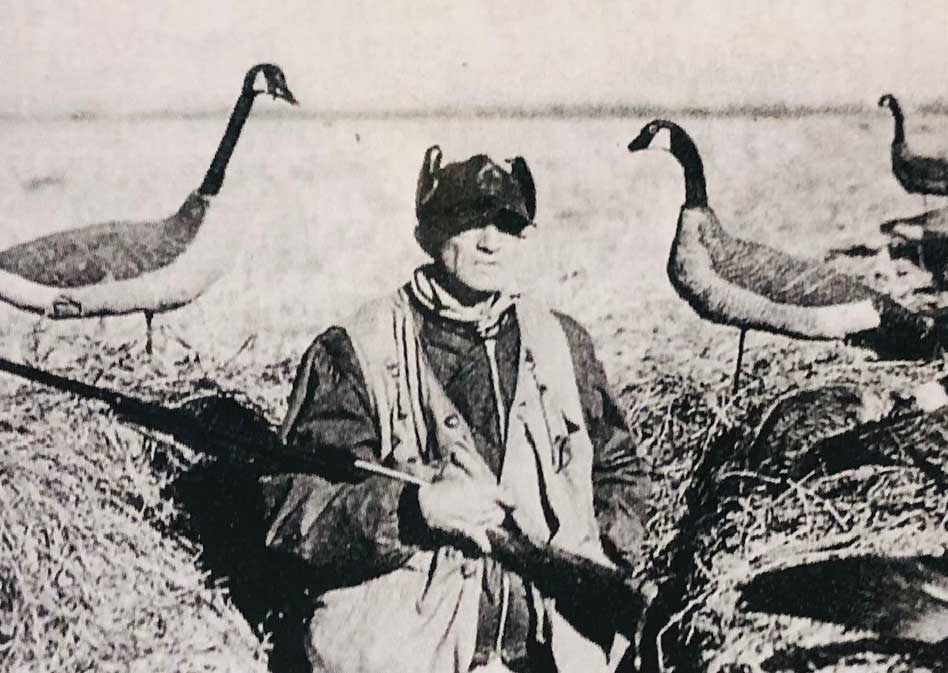
1871-1957
Memphis, Tennessee
If there was ever a Duck Call Maker’s Hall of Fame, Tom Turpin from Memphis, Tennessee would be in the first induction class.
As compared to other call makers, not much is known about the early life of Tom Turpin. What is known is that there was no other call maker that worked as tirelessly as Turpin did to create, in his mind, the perfect duck call. His call making took place in his shop located at 1150 Eastmoreland Avenue in Memphis. It is believed that he started making calls as early as 1900 and stopped around 1952 due to health reasons.

As an avid hunter himself, it gave Turpin great satisfaction knowing that hunters that used his calls had the proper tools to be successful in the field. Turpin wrote detailed instructions along with instructional records for hunters to use to become better callers. His efforts to make the perfect duck call and educate his customers on how to use his calls was borderline obsessive.
Turpin modeled his early duck calls after those of famed Reelfoot Lake call maker, Victor Glodo. Turpin believed that Glodo made the best and most user-friendly duck call that he had ever heard. Turpin thought that by taking Glodo’s design and using a higher quality of wood that would not swell or crack would make the perfect call.
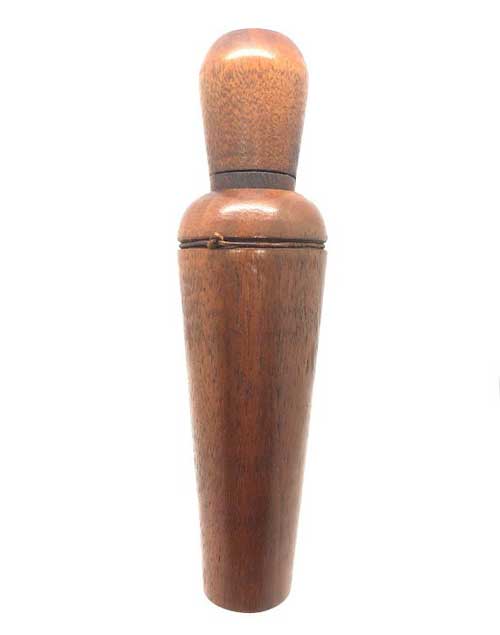
One characteristic that Turpin used in his calls that came from Glodo was over-boring a portion inside the duck call’s barrel. Turpin had once heard that the sound in the bottom of a dome shaped well was louder than that in the well shaft. His thought was that creating a larger diameter in the middle of a duck call barrel would make the call much louder. If you ever hear a collector talk about an old call being “Glodo’d,” this is what they are referring to. Turpin did this on a vast majority of his calls but not all of them.
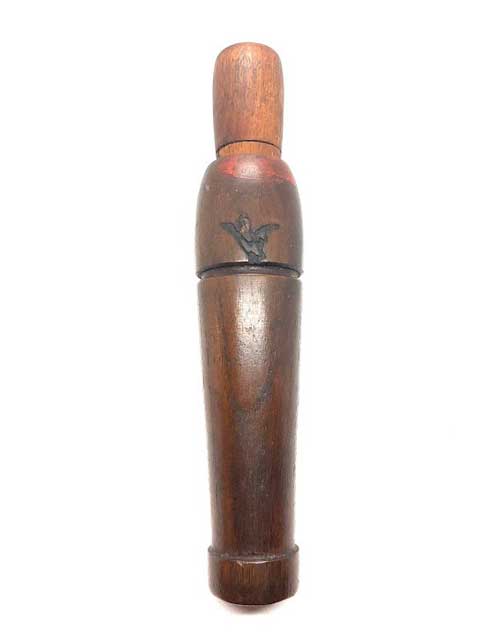
Up until the early 1920s, Turpin carved all of his calls by hand or turned them on a lathe. Business was booming for Turpin and he simply could not keep up with the demand. He began to outsource his call making to E.B. Estes and Sons, a machine shop in New York City. I was very fortunate to acquire hundreds of letters of correspondence between Turpin and the company.
Turpin was a very smart business man and watched his spending very closely. He would make and send them a sample of a barrel, stopper, and wedge block with a price he was willing to pay to have them made. The tolerances that Turpin gave them to work with were very tight and did not leave much room for error.
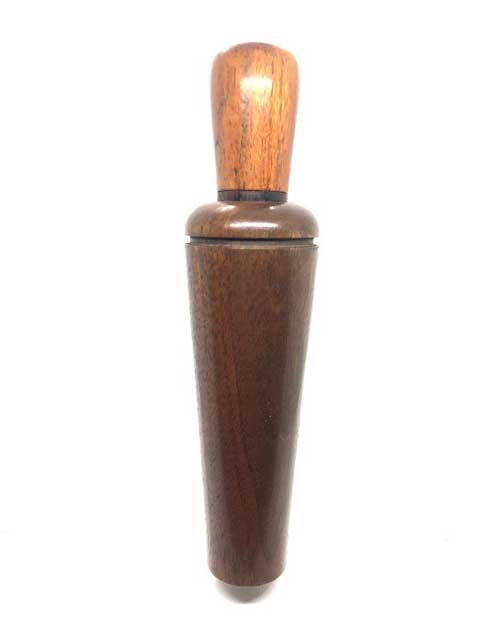
Turpin was rarely satisfied with what he received from them and would attempt to get them to lower the price, even though he was not willing to send the work back. He was regularly sending them new prototype stoppers to replicate. There is really no telling how many different styles of stoppers and barrels Turpin made in the 1930s and 40s. With that said, it is very hard to say what Turpin did or did not do when evaluating one of his calls. Over time, Turpin accumulated a vast inventory of duck call parts and pieces. He would finish the parts and pieces that he deemed quality and the rest he stored away.
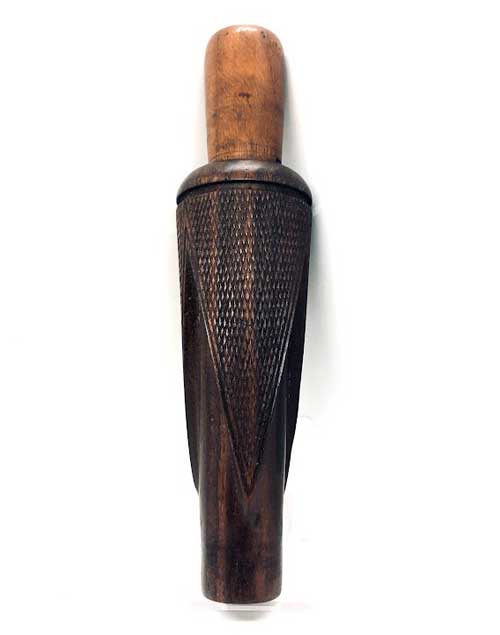
Turpin used many different kinds of woods and other materials but his favorite wood to use was Teak. He made calls out of bakelite and hard-rubber for a short amount of time but the man-made materials were not acceptable to him, because they didn’t produce the soft tones he desired in a call.
His best seller was a call used to hunt large bodies of water. These calls were rather large in stature and had a large bore to make them louder. The standard open water model was referred to as his Reelfoot Model and was made with a walnut barrel and a teak stopper. He made an open water model made completely out of teak that he called his “Deluxe Model.” In his later years, Turpin stamped three flying ducks on the barrel of his open water model. Amongst collectors, these are referred to as “Three Duck Turpin’s.”
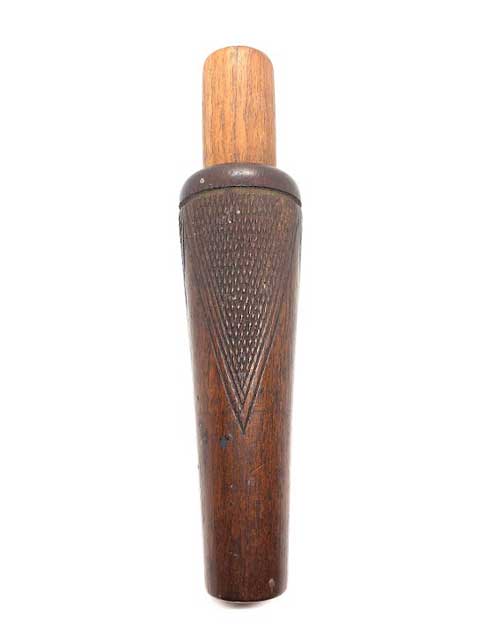
Along with his open water model calls, Turpin also made a Louisiana style call, a pintail/widgeon whistle, and a timber model call as his staples. In 1932, he published a pamphlet “Ducks: How to Call Them.” The pamphlet was an instruction manual on how to use his products and listed all of the products that he made and sold besides duck calls. He made turkey calls. Crow calls, squirrel calls, shotgun cleaning rods, and instructional records.
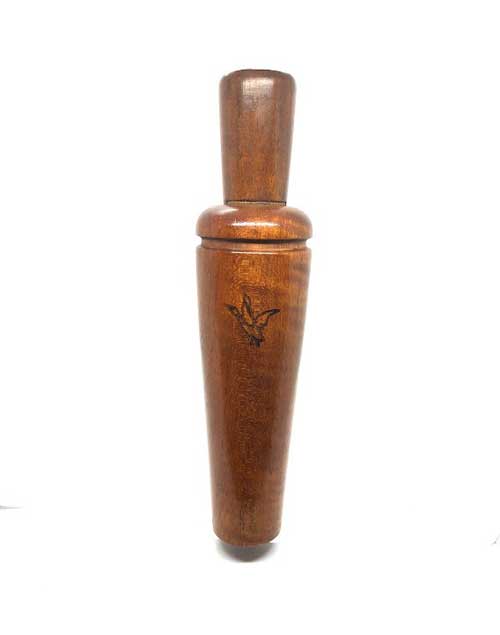
In his later years, Turpin suffered some ongoing health issues and spent a good amount of time at the Mayo Clinic in Rochester, Minnesota. In his travels to and from Minnesota, Turpin stopped and promoted his products everywhere in between.
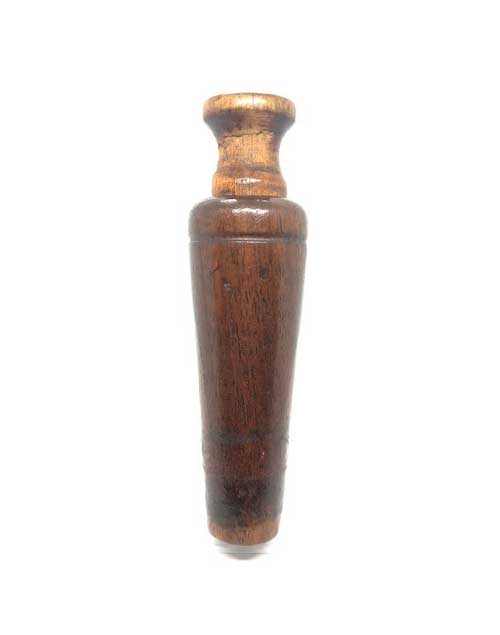
Collectors of old duck calls cherish the work of Tom Turpin. Every call that Turpin ever made or sold is desirable but it is his early calls, checkered calls, and calls made of special woods and materials that are so sought after. Tom Turpin was also one of the earliest known collectors of calls. After Turpin’s death in 1956, his daughter sold his game call business to John Levy Melancon from Trout, Louisiana.
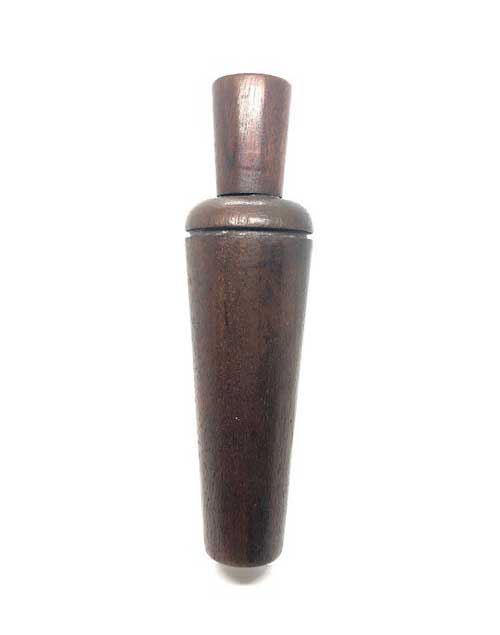
You can see examples of Tom Turpin calls from my collection that are pictured below on display at the Ducks Unlimited Heritage Center in Memphis, Tennessee inside the Bass Pro Shops Pyramid until September 2022. I can be reached at rkegraves@gmail.com and @rkegraves on Instagram.














